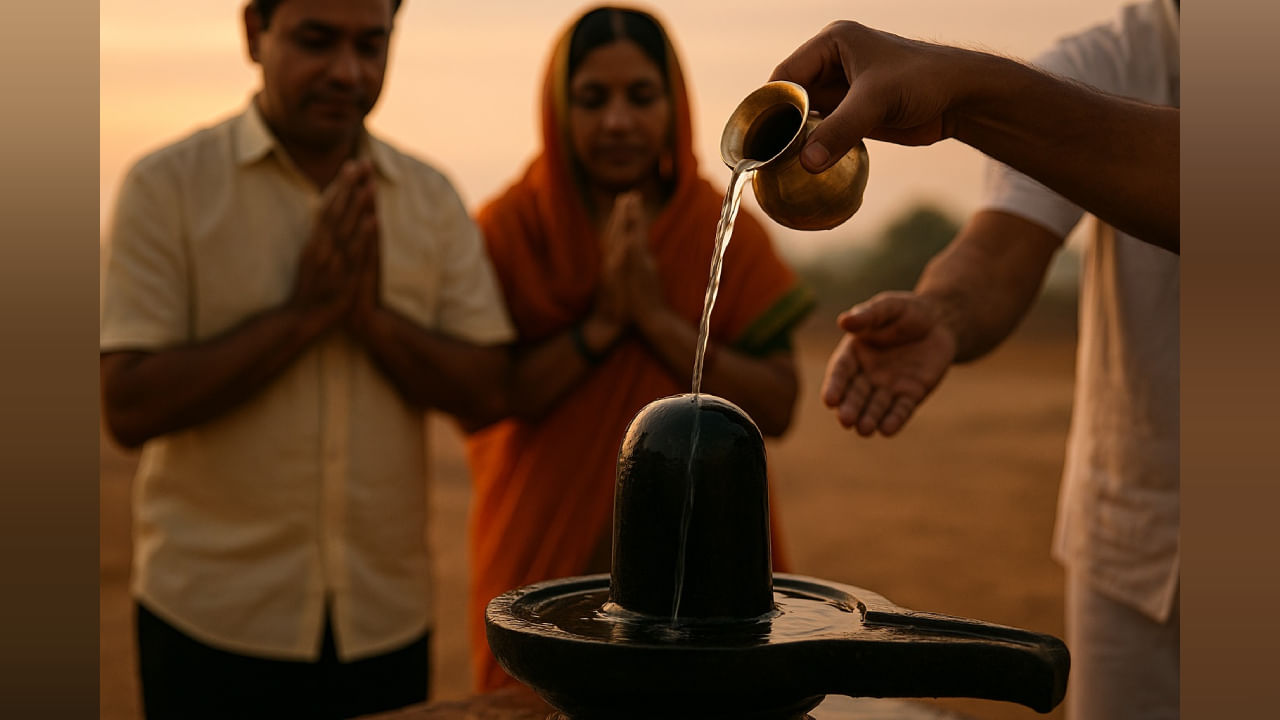Mumbai: The sacred month of Sawan (Shravan) has officially begun today, marking the start of a spiritually powerful period for devotees of Lord Shiva. From the first light of dawn, temples across India began echoing with the chants of “Om Namah Shivaya”, as worshippers performed jalabhishek — the ritual of offering water to the Shiva Lingam — seeking blessings for peace, prosperity, and health.
But while Sawan is filled with devotion, many modern-day rituals miss the deeper spiritual essence behind them. Hindu scriptures highlight specific rules for offering water to Lord Shiva, and failing to follow them could reduce the effectiveness of one’s prayers. The most overlooked — and spiritually significant — mistake? Not bringing water from home.
Why Sawan and Jalabhishek Are Spiritually Linked
According to ancient mythology, when Lord Shiva consumed the deadly Halahal poison during the churning of the cosmic ocean (Samudra Manthan), his body began to burn from within. To ease his suffering, the gods began pouring cool water over him — a tradition that evolved into offering water to Shiva during Sawan, which is now one of the holiest Hindu months.
This isn’t just symbolic. Water carries vibrational energy, and when offered with the right intention and purity, it can help cleanse negativity, attract good fortune, and balance the spiritual energies in your life.
Don’t Make This Common Mistake in Sawan 2025
Many devotees today skip an important step: they use water kept at the temple instead of bringing it from home. While convenient, this practice strips the ritual of a key spiritual principle. Water is believed to absorb and carry energies. The water from your home holds the essence of your environment — both positive and negative.
By bringing your own water and offering it to Lord Shiva, you transfer your home’s energy to the divine. If your home has been affected by stress or negativity, the act of offering its water symbolically purifies those energies. If your home is already peaceful, the offering enhances your household’s spiritual aura, bringing more abundance and blessings.
The Forgotten Power of Water in Rituals
In earlier times, people would walk miles with water from sacred rivers or personal vessels to perform jalabhishek. Even in villages today, devotees still carry a lota (metal pot) of water from home. While modern urban life may make this difficult, the practice still holds tremendous energetic value.
The water you collect from your home becomes spiritually charged with your intention. When offered to Shiva, it’s not just water — it becomes a conduit of healing, connection, and transformation.
Sacred Rules for Offering Water to Shiva
To make the most of your Sawan rituals, follow these essential guidelines:
- Bring water from home: Avoid using temple-stored water. Your home’s water carries your personal energy and intention.
- Keep the stream unbroken: While offering, ensure the water flows continuously onto the Shivling. A broken stream is considered inauspicious.
- Do not step over the jaladhari: The water outlet of the Shivling is sacred and should never be crossed.
- Face north while offering: North is the direction associated with Lord Shiva. Always face this way during jalabhishek.
A Powerful Start to Sawan 2025
As the first day of Sawan unfolds, let your devotion be guided not just by faith but by intention and ritual purity. By following these age-old guidelines, your worship becomes more than tradition — it becomes a transformative offering that invites peace, prosperity, and divine grace into your life and home.
(Disclaimer: The information provided is based on traditional beliefs and religious texts. News9 Live does not endorse or validate these claims.)
